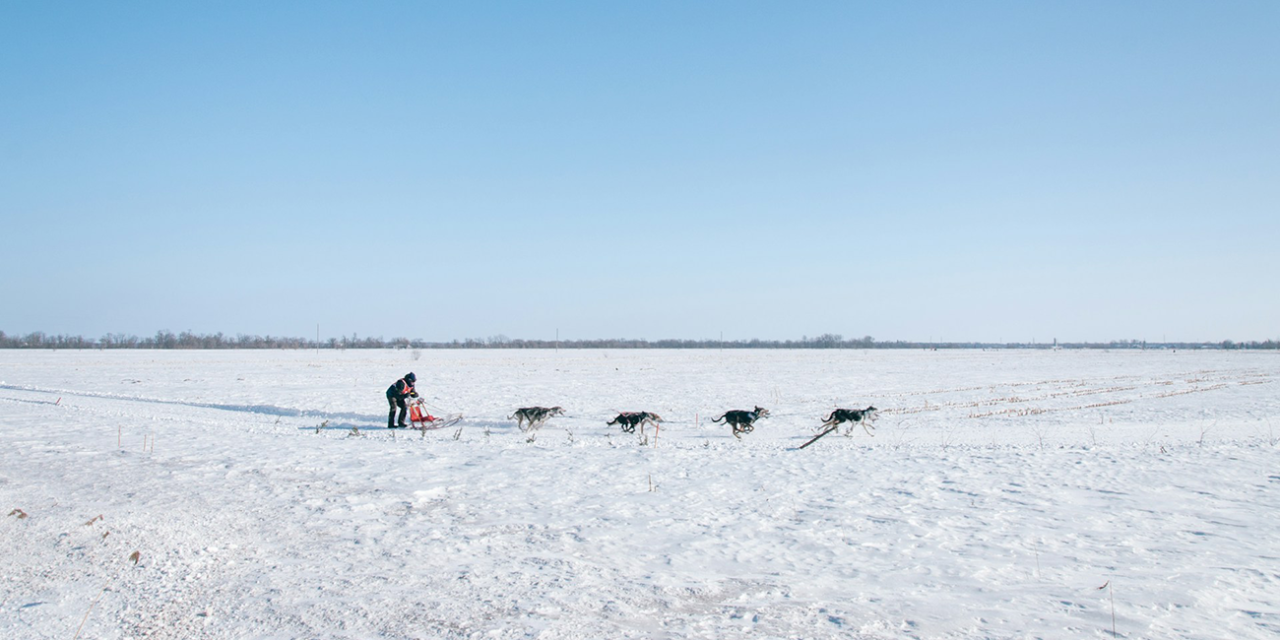Dog sledding, often referred to as mushing, is a fascinating and rigorous sport with a rich history.
Mushing encompasses various dog-powered sports and transportation methods, including carting, pulka, scootering, dog sled racing, weight pulling, skijoring, bikejoring, freighting, and canicross.
Table of Contents
Q&A: Exploring Dog Sledding
Q: What is mushing?
A: Mushing is a general term for dog-powered sports or transportation methods. This includes activities like carting, pulka, scootering, dog sled racing, weight pulling, skijoring, bikejoring, freighting, and canicross. The word “mush” originates from the French word “marche,” meaning “go.” Although “Mush!” is rarely used today, as some mushers find it too soft to motivate the team, the command “Hike!” is more commonly used now.
Q: How many dogs are in a dog sledding team?
A: The number of dogs in a sledding team varies depending on the musher’s needs and the specific race. For instance, in the Iditarod, the maximum number of dogs is 16, while other races might limit teams to just one dog. There’s no fixed number required to pull a sled, as long as the dogs are sufficient to handle the load. As a testament to their strength, a single Siberian Husky can pull a rig with a musher on its own.
Q: What is a rig?
A: A rig is a vehicle used for running a dog sled team on snowless ground. It is usually a three-wheeled homemade contraption made with welded pipes. Rigs are also referred to as chassis or carts. For larger teams, such as those with around 10 dogs, some mushers use an ATV as their rig. Occasionally, a car without an engine is used to give the musher more control, preventing them from being dragged by the powerful team.
Q: How do mushers steer their sled?
A: Mushers steer their sleds by using commands to direct their lead dogs. Common commands include “Gee!” for right, “Haw!” for left, “Whoa!” for stop, and “Hike!” for go. Advanced commands like “On By!” instruct the team to pass by a split in the trail or another dog sled team. The musher also leans the sled to follow the dogs’ path.
Q: What is a lead dog?
A: Lead dogs are at the front of the team and take commands from the musher. Behind the lead dogs are the point dogs, which aid in turning the team. Team dogs provide strength, while the wheel dogs, positioned right in front of the sled, handle the sled’s impact and ensure it stays on track. All dogs work together harmoniously to pull the sled.
Q: What holds the team together?
A: The team is connected by a system called the gangline. The tow line runs the entire length of the gangline, bearing most of the strain. Tug lines connect each dog to the tow line, and necklines attach the dogs’ collars to the tow line, keeping them in line and preventing tangling. Some teams use a fan hitch style, especially in open areas like tundra and sea ice.
Q: What type of dogs are used on a dog sled team?
A: Various breeds are used, including Alaskan Huskies, Siberian Huskies, Alaskan Malamutes, and Samoyeds. Alaskan Huskies, a mix of breeds like husky, hound, and border collie, are known for their speed. Siberian Huskies are light and suited for long distances, while Alaskan Malamutes excel at pulling heavy loads. The key is the dogs’ love for pulling, not their appearance.
Q: Don’t non-arctic dogs get cold when they dog sled?
A: Dogs without a thick undercoat are given protective gear to stay warm. While running, dogs generate a lot of heat. Even dogs with less fur stay warm during activity. At checkpoints, dogs may wear coats, and manufacturers make special coverings for their sensitive areas. Booties are used to protect their feet from snow and ice, ensuring the dogs’ comfort and health.
Q: What is the role of the musher during a race?
A: The musher is responsible for guiding the team, managing their well-being, and ensuring the sled follows the correct path. This involves giving commands, providing care at checkpoints, and making strategic decisions to optimize the team’s performance and safety throughout the race.
Q: How do mushers train their dogs for racing?
A: Training involves conditioning, obedience, and team cohesion exercises. Mushers gradually increase the dogs’ endurance through regular runs, teach them commands, and ensure they work well together. Training is a continuous process that prepares the dogs for the physical and mental demands of racing.
Q: What kind of equipment is essential for dog sledding?
A: Essential equipment includes the sled, gangline, harnesses, booties, and protective gear for the dogs. The sled needs to be sturdy and lightweight, while the gangline and harnesses must be durable and fit well. Booties protect the dogs’ feet, and additional gear like coats or blankets may be used in extreme conditions.
Q: How do weather conditions impact dog sledding?
A: Weather conditions significantly affect the safety and performance of the team. Mushers need to monitor temperatures, snow quality, and potential hazards. Proper preparation and flexible strategies are crucial to adapting to changing weather and ensuring the team’s well-being.
Q: What is the significance of the Iditarod race in the mushing community?
A: The Iditarod is one of the most prestigious and challenging long-distance dog sled races. It covers approximately 1,000 miles across Alaska, testing the endurance, skill, and resilience of both mushers and dogs. Completing the Iditarod is a significant achievement and a testament to the dedication and expertise of the participants.
Q: How do mushers care for their dogs during long races?
A: During long races, mushers prioritize the health and well-being of their dogs by providing regular breaks, hydration, and nutrition. At checkpoints, dogs are examined by veterinarians, given rest, and treated for any injuries or discomfort. Mushers also ensure their dogs are well-fed with high-calorie, nutrient-rich food to maintain their energy levels throughout the race.
Q: What is the role of a handler in dog sledding?
A: Handlers assist mushers by helping care for the dogs, preparing equipment, and providing support during training and races. They play a crucial role in maintaining the health and readiness of the dogs, ensuring that the team is well-prepared and that the musher can focus on steering and strategy during the race.
Q: How do mushers select their lead dogs?
A: Mushers select lead dogs based on their intelligence, temperament, and responsiveness to commands. Lead dogs need to be focused, confident, and able to make quick decisions. They are typically the most experienced and well-trained dogs on the team, capable of setting the pace and guiding the other dogs through various terrains and conditions.
Q: What types of races are there in dog sledding?
A: Dog sledding races vary in distance and format, including sprint races, mid-distance races, and long-distance races. Sprint races are short, high-speed events, typically ranging from 4 to 30 miles. Mid-distance races cover around 100 to 300 miles and test both speed and endurance. Long-distance races, such as the Iditarod, span up to 1,000 miles and challenge the stamina and resilience of both mushers and dogs.
Q: How do mushers prepare for extreme weather conditions during races?
A: Mushers prepare for extreme weather by equipping their sleds with essential supplies, such as extra dog booties, blankets, and emergency food and water. They also train their dogs to handle various weather conditions and ensure they have appropriate gear to stay warm and protected. Mushers themselves wear insulated clothing and carry survival kits to be ready for any situation they might encounter on the trail.
The Legacy of Dog Sledding
Dog sledding is more than just a sport; it’s a testament to the bond between humans and their canine companions.
This ancient mode of transportation has evolved into a modern sport that requires rigorous training, precise equipment, and a deep understanding of the dogs’ needs and capabilities. As mushers and their teams continue to push the boundaries of endurance and speed, they honor the traditions of the past while embracing the innovations of the future.
The world of mushing remains a captivating and dynamic aspect of the relationship between humans and dogs, showcasing teamwork, resilience, and the thrill of the race.





